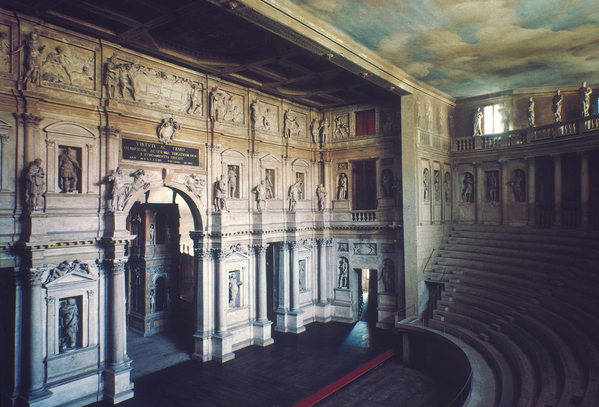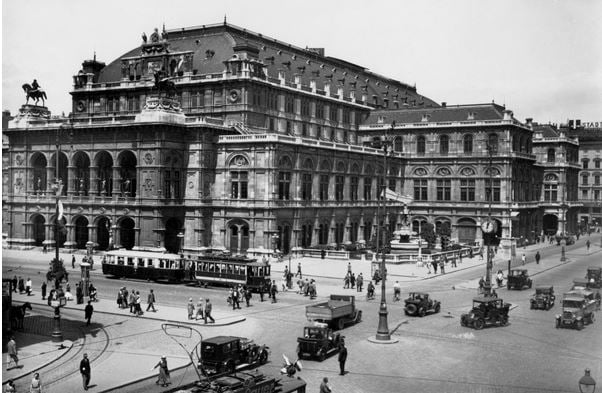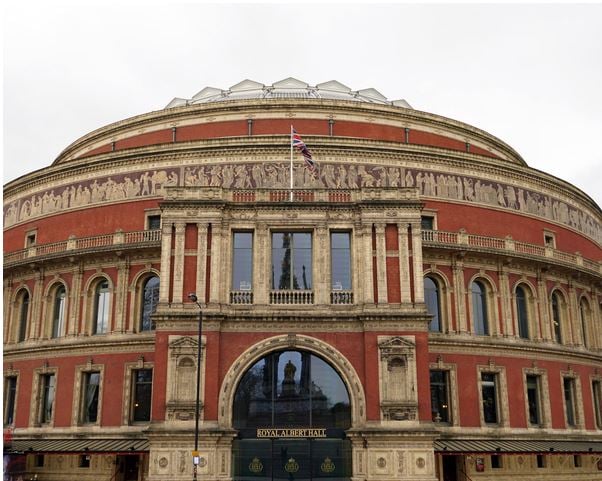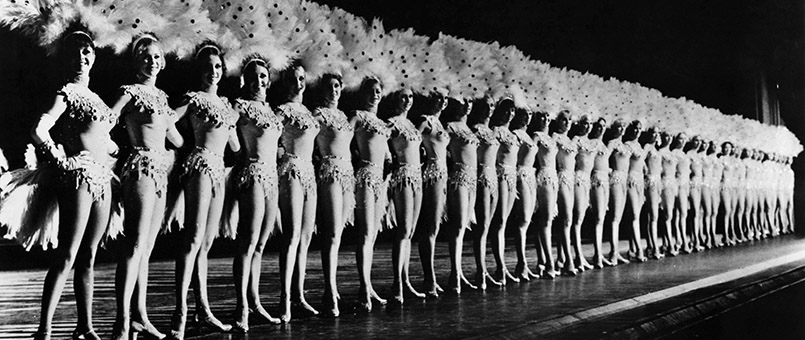
7 Spectacular historic theatres you should visit
William Shakespeare famously noted that all the world’s a stage. The world is certainly full of magnificent stages, some of which don’t only host the finest performances, but are spectacular masterpieces in their own right. From the oldest known stone theatre to buildings connected to legendary playwrights, we’ve lined up 7 theatres that provide a glimpse into the history of the performing arts.
The Theatre of Dionysus – Athens, Greece
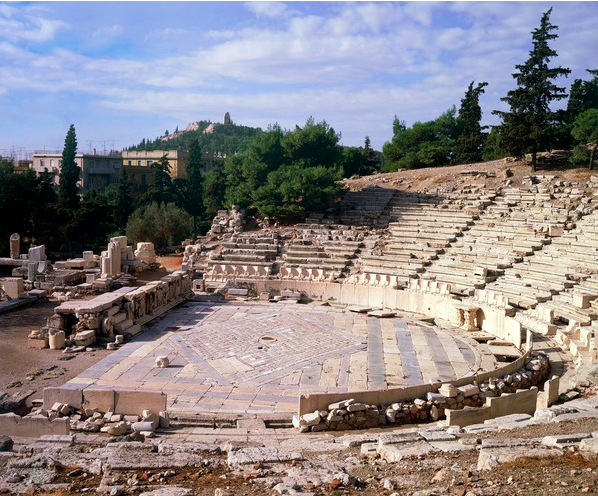
Greece, Athens, The Acropolis of Athens, Dionysus Theatre,4th Century BC, Ancient Greece / De Agostini Picture Library / G. Dagli Orti
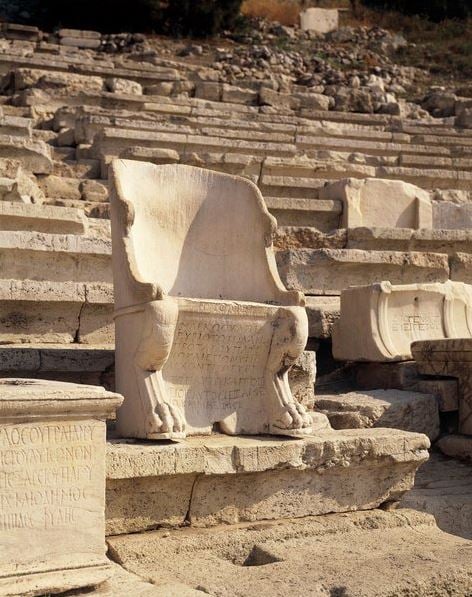
Greece, Attica, Athens, Theatre of Dionysus, seat carved in marble at Acropolis / De Agostini Picture Library / G. Dagli Orti
If you’re interested in theatre history, this place should be high on your list: carved into the hillside of the Acropolis in Athens, the Theatre of Dionysus is the oldest stone theatre known to us (4th Century BC), and showed plays by Ancient Greece’s most iconic playwrights including Sophocles and Euripides. The theatre most likely has its origins in festivals in honour of Dionysus, the god of wine, fertility and general merriness (called the Dionysia). During these festivals plays, processions, sacrifices and many other forms of public entertainment were put on. This first took place in more temporary wooden structures, and later in stone constructions like this one. The building is comprised of the classic fan-shaped theatron or seating area, designed to fit many people but also for optimal acoustics, a round orchestra or stage area where the chorus performed, and a backdrop called skene. These photos also show bigger seats on the front row called proedria, which were reserved for VIPs.
Teatro Olimpico – Vicenza, Italy
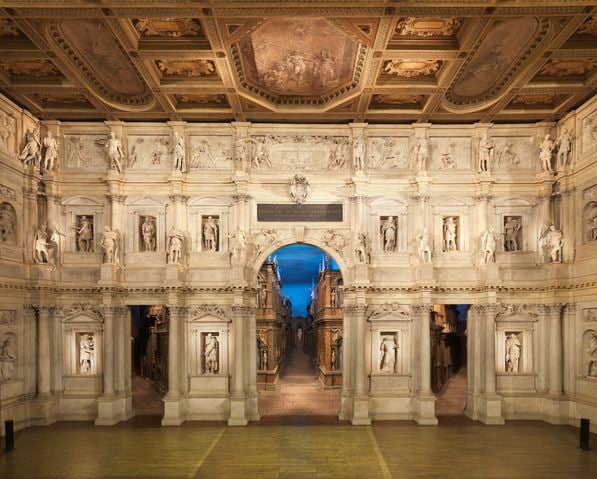
Teatro Olimpico (Olympic Theatre), Vicenza, 1580, Andrea Palladio (1508-80) / Mondadori Portfolio/Electa/Marco Covi
Onto another first in the history of theatre building: the Teatro Olimpico in Vicenza, built between 1580-85, is the first indoor theatre in the world. However that’s not the only exciting part: this theatre was built by renowned Renaissance architect Andrea Palladio, whose innovative adaptation of the grand style of Ancient Rome to more contemporary, “livable” buildings including domestic architecture (especially country villas), would continue to influence architecture until long after his death in 1580. That’s right, Palladio had already died when this theatre was being built, making it his final masterpiece. His original designs for the theatre were executed by his pupil, Vincenzo Scamozzi.
The Globe Theatre – London, UK
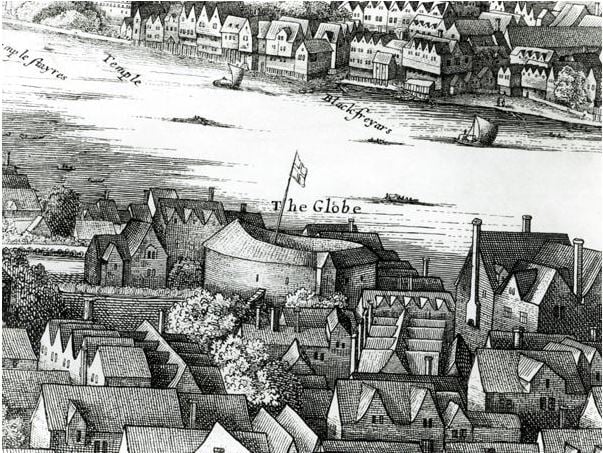
The First Globe Theatre or Rose Theatre (engraving) (b/w photo), English School / Private Collection
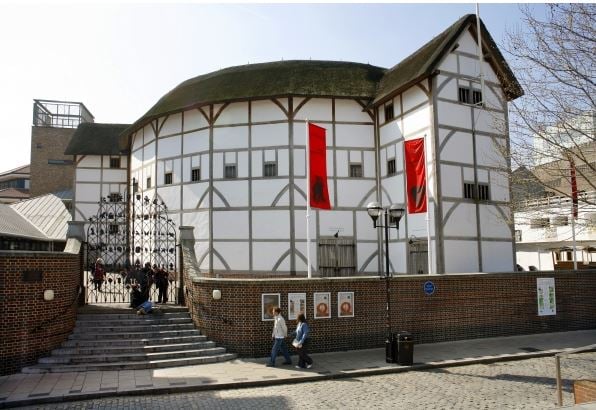
Shakespeare’s Globe, Stage and seating, opened in 1997; Southwark, London, UK (photo) / © Peter Phipp/Travelshots

Portrait of William Shakespeare, engraved by Martin Droeshout, 1623 (engraving) (b/w photo), English School, (17th century) / Private Collection
London’s Globe theatre is closely connected to England’s most illustrious actor and playwright: William Shakespeare. Shakespeare and his acting troupe, the Lord Chamberlain’s Men built this iconic Elizabethan structure. Inspired by the barns and inns that acting groups had used as stages during the Middle Ages, the timber-framed open air Globe theatre featured galleries where the audience could sit and a courtyard with standing places (where “groundlings” could attend performances for a penny). The stage had an elaborate array of trap doors and other mechanisms for special effects. The original building was destroyed by fire in 1613 and the rebuilt structure demolished by Puritans under Oliver Cromwell in 1644. The current building, a stone’s throw away from the original site and made according to archaeological and historical evidence, was opened by the Queen in 1997. Fun fact: it was the first thatched roof to be allowed in London since the Great Fire of 1666.
Comedie Francaise – Paris, France
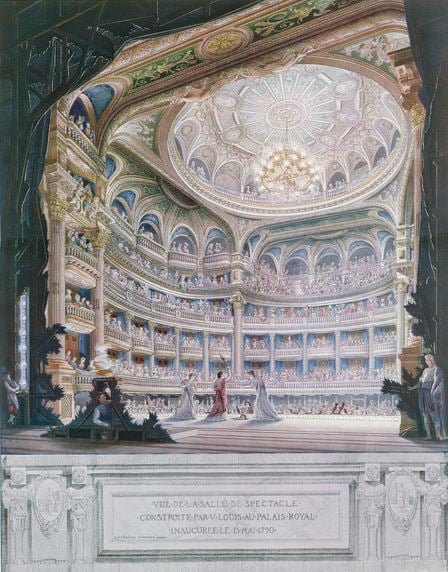
View of the Comedie Francaise Theatre in 1790, after an original by Gaudet and Prudent (colour engraving), French School, (19th century) / Bibliotheque de la Comedie Francaise, Paris, France / Archives Charmet
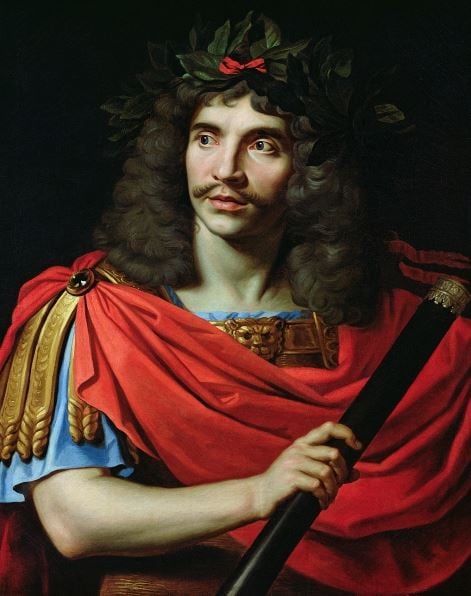
Moliere in the Role of Caesar in ‘The Death of Pompey’ (oil on canvas), Nicolas Mignard (1606-68) / Musee de la Ville de Paris, Musee Carnavalet, Paris, France
This theatre boasts a direct connection to one of France’s greatest playwrights, and master of comedy: Moliere. Its story starts with three rivalling Parisian theatre groups (one directed by Moliere), which were ordered to form a single, centralised group by none other than King Louis XIV, who was very passionately involved with the arts of his country. Though not in its original building, the Comedie Francaise, founded in the 1680’s, is considered the oldest theatre in the world that still operates. However, not everything changes, as to this day “Moliere’s Chair” still welcomes guests inside the theatre.
Wiener Staatsoper – Vienna, Austria
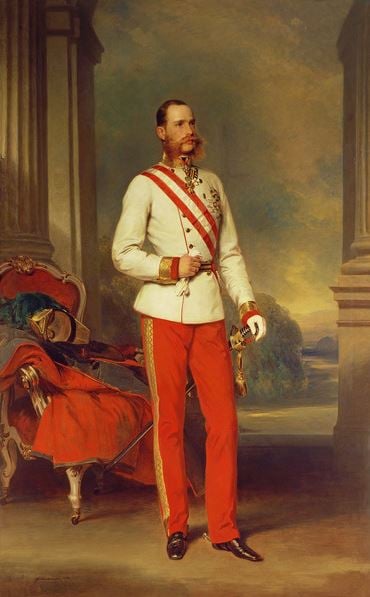
Franz Joseph I, Emperor of Austria (1830-1916) wearing the dress uniform of an Austrian Field Marshal with the Great Star of the Military Order of Maria Theresa, 1864, Franz Xaver Winterhalter (1805-73) / Kunsthistorisches Museum, Vienna, Austria
A bit of a cheat this one, as the Wiener Staatsoper has strictly always been an opera house. However, its history as the once-reigning Habsburg Family’s official court opera and suitably grand architecture make it a worthy addition to the list. Originally built between 1861-69 as the “Wiener Hofoper” or “Viennese court opera”, a name which was changed with the advent of the Austrian Republic, the opera house shows the Habsburgs’ priorities: of Emperor Franz Joseph I’s ambitious city expansion project, which still shapes the city of Vienna, this was the first structure to be built. The first performance ever held was of Mozart’s Don Juan. Mozart, in many ways Austria’s national pride, also influenced the building’s decoration, especially Moritz von Schwind’s famous “magic flute” frescoes in its foyer. To this day, the State Opera has held its reputation for musical excellence up high: musicians from the Vienna Philharmonic are always selected from its orchestra.
Royal Albert Hall – London, UK
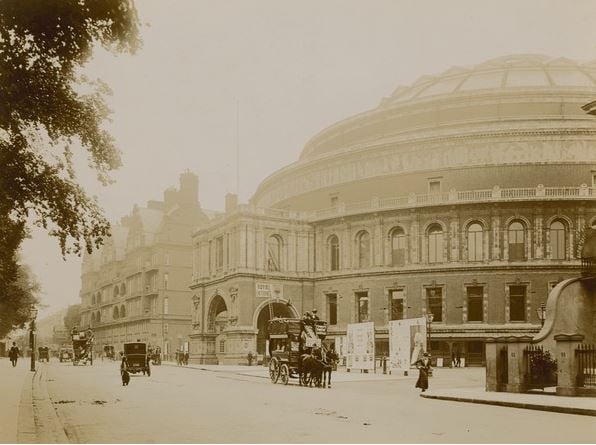
General view of the Royal Albert Hall (photo), English Photographer, (19th century) / Private Collection / © Look and Learn / Peter Jackson Collection
There is a reason London’s Royal Albert Hall is so big: this building was meant to reach the nation. Prince Albert, husband of Queen Victoria, came up with the idea of the Hall (to be named the “Central Hall”) to advance the arts and sciences, something the Prince Consort had campaigned for all his life, notably by helping to organise the 1851 “Great Exhibition”. However, the Prince’s untimely death in 1861 meant that he would never see his plans realised. To make her husband’s plans a reality, Queen Victoria carried on with the project and laid the building’s foundation stone in 1867. The Hall’s architects were greatly inspired by Ancient Roman amphitheatres, which is where the building’s distinctive round shape originates. Albert’s conception of the Hall as an emblem of accessibility and promotion of the arts still survives, as the 800 foot long mosaic frieze that encircles the building depicts the Advancement of Arts and Sciences in all nations.
Radio City Music Hall – New York, USA
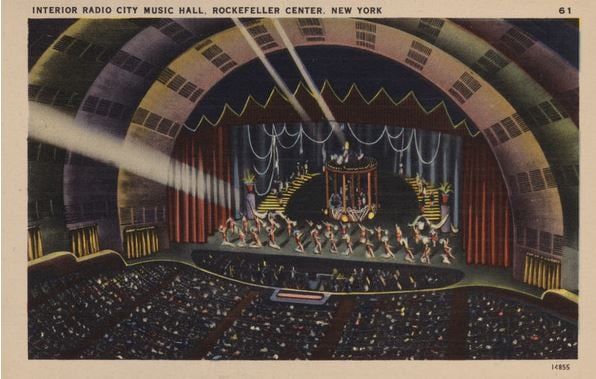
Interior, Radio City Music Hall, Rockefeller Center, New York (colour litho), American School, (20th century) / Private Collection / © Look and Learn
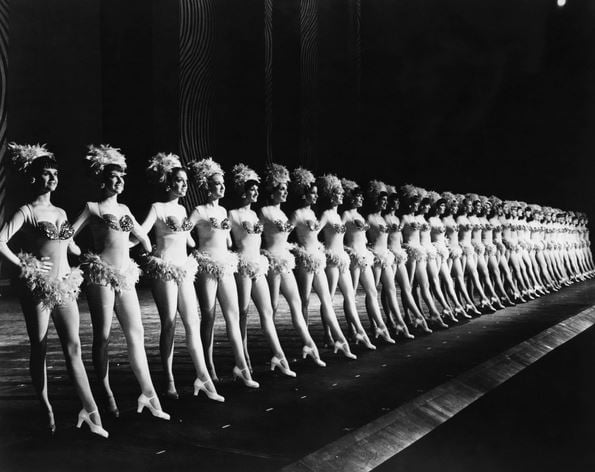
NEW YORK: ROCKETTES The Rockettes dance group performing at Radio City Music Hall in New York City. Photograph, mid 20th century. / Photo © Granger
Founded just after the 1929 financial crash by John D. Rockefeller, New York’s Radio City Music Hall reflects a spirit joy and glamour more than hard times. This Art Deco venue, whose sunset-inspired stage is one of the most famous theatre designs in the world, was meant to be a “palace for the people”, somewhere ordinary people could go and attend performances. Some of its most renowned performers include the Radio City Music Hall Rockettes: a glamorous girl chorus line with dancers proficient in tap, ballet as well as jazz. The building’s sophisticated interior, designed by Donald Deskey, features over thirty different spaces including lounges and smoking rooms, each with their own decorative motifs. The use of materials showcases a modern, industrial pragmatism: alongside precious marble and gold, the designer used cork and aluminium. The Radio City Music Hall is a true landmark of Art Deco architecture and design, so much so that it led a critic to remark: “It has been said of the new Music Hall that it needs no performers.”
Like what you see? Get in touch with your local Bridgeman office for any image research or licensing queries.
North and South America: nysales@bridgemanimages.com

